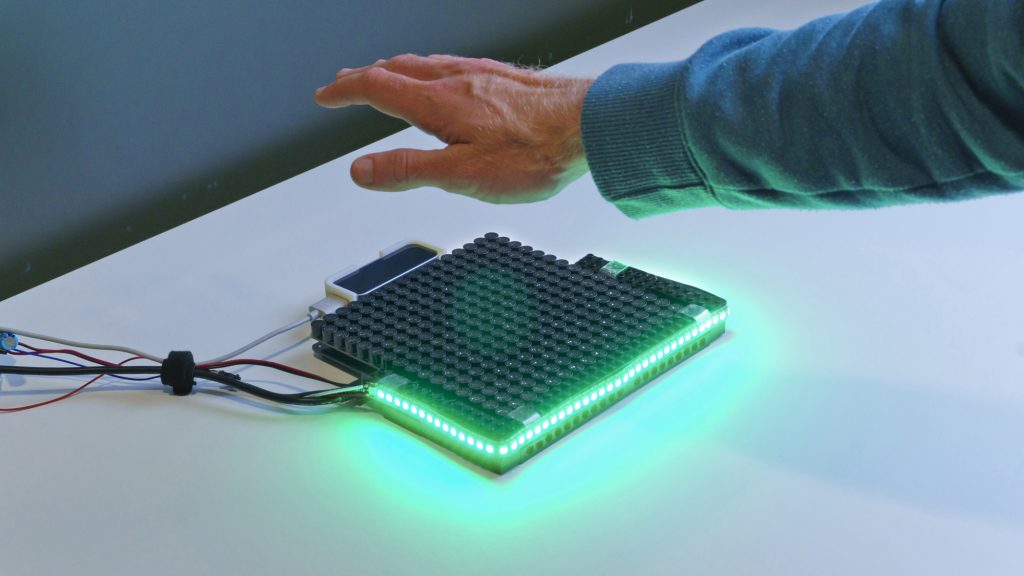Last week I was at the IEEE World Haptics Conference in Tokyo, Japan. I was presenting my full paper on HaptiGlow, a new system and feedback technique for helping users find a good hand position for mid-air interaction.

I brought a demo to give during the interactive presentation session, which seemed to go well. The demo was self-motivating: most people instinctively approach mid-air haptic devices in a poor way, so the demo session immediately highlighted the need for feedback that helps users improve their hand position.
Unsurprisingly, the person who needed the feedback the least was Hiroyuki Shinoda, whose lab has done some of the most important work on ultrasound haptic feedback. For most other attendees, however, I think this demo was a poignant way of showing the need for more work that helps users understand how to get the most out of these devices.
Some thoughts about the rest of the conference: there was a huge presence from Facebook Reality Labs, so it’ll be interesting to see how large scale industry involvement shapes the next couple of years of haptics research; wrist-based haptics seemed a popular topic, especially squeezing the wrist; the variety of haptic devices for VR continues to grow, including haptic shoes; rich passive haptics and material properties are clearly important to industry, a complement to the dynamic digital haptics that tend to dominate the conference proceedings; finally, there are lots of technology-focused contributions and lots of perception-focused contributions, why are these sub-communities not working together as much as they could be?
